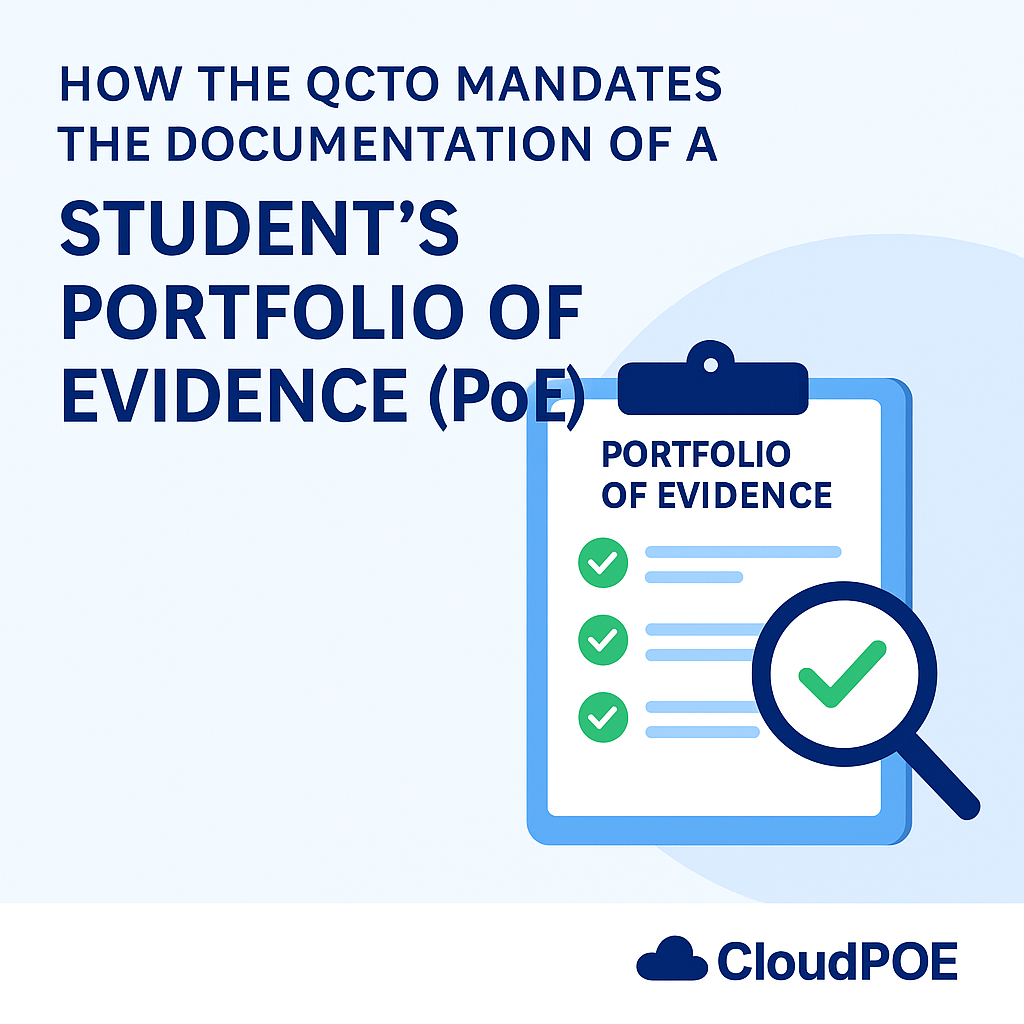How the QCTO Mandates the Documentation of a Student’s Portfolio of Evidence (PoE)

As South Africa’s training and development landscape transitions fully from SAQA to QCTO qualifications, compliance expectations are evolving — especially when it comes to the Portfolio of Evidence (PoE). For training providers, facilitators, and assessors, understanding QCTO’s PoE requirements is crucial for continued accreditation and learner success.
What Is a Portfolio of Evidence?
A Portfolio of Evidence (PoE) is a structured collection of documents that demonstrate a learner’s competence in relation to the outcomes of a registered occupational qualification.
Under the QCTO framework, the PoE plays a central role in:
- Internal assessment
- External moderation
- Final certification
It is no longer a “nice to have” — it’s a regulatory necessity.
QCTO’s Requirements for PoE Documentation
QCTO mandates that every learner’s PoE must:
1. Follow a Structured, Nationally Standardized Format
Unlike SAQA’s unit standard-based flexibility, QCTO PoEs must reflect all components of the occupational qualification:
- Knowledge Component (theory and concepts)
- Practical Component (simulated tasks)
- Workplace Component (real job experience)
Each section must include specific evidence tied to curriculum outcomes, not just generic logs.
2. Be Authenticated and Verified
Every entry in the PoE must be:
- Verified by a registered assessor
- Signed off by a workplace supervisor (for the workplace component)
- Reviewed by an internal moderator
Authenticity and traceability are essential. QCTO audits frequently review signature trails, workplace evidence, and logged assessment tasks.
3. Be Secure, Accessible, and Audit-Ready
PoEs must be:
- Kept securely (preferably digitally)
- Easily retrievable for QCTO verifiers
- Clearly indexed and well-organized
Providers are encouraged to use digital platforms like CloudPOE to reduce the risk of loss, tampering, or incomplete submission.
4. Be Linked to Summative External Assessment
PoEs are used during internal assessments and may be submitted to External Assessment Quality Partners (AQP) appointed by QCTO for summative evaluations.
If documentation is incomplete or non-compliant, learners may not be declared competent, even if they performed well in practice.
Common Mistakes Providers Must Avoid
- Using outdated SAQA-based templates
- Failing to track practical and workplace components separately
- Submitting unverified or unsigned logbook entries
- Relying solely on printed PoEs with no backup
How CloudPOE Helps Training Providers Stay Compliant
CloudPOE is a QCTO-aligned digital system that helps you:
- Log, verify, and store PoE entries in real time
- Ensure all three qualification components are captured
- Generate ready-to-submit PoE reports for moderation and verification
- Securely store data in the cloud for audit and certification processes
Final Thoughts
QCTO has raised the bar for occupational training in South Africa — and the Portfolio of Evidence is at the heart of it. Providers who invest in proper documentation tools and systems will stay ahead, avoid compliance issues, and deliver better results for their learners.
👉 Ready to simplify your PoEs and stay compliant? Book a CloudPOE demo today


